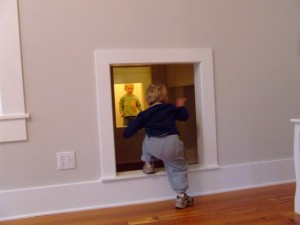When choosing a new mattress for your modern bed, start by evaluating the old one. Do you like the size? How about the support? Also consider the size, and sleeping or lounging habits, of the people who will be using the mattress. A comfortable bed begins with a comfortable, quality mattress and a good foundation, such as a box spring or raised platform.
Basically, there are two types of mattresses; innerspring and foam. Innerspring mattresses come in the same standard sizes as bed frames; king, queen, full (or double) and twin or (single). Innerspring mattresses are composed of springs connected in various ways: open springs, individual springs aligned in rows within the mattress; continuous springs, a network of connected wire instead of individual springs; and pocketed springs, with each spring enclosed in its own pocket. Pocketed springs are considered to be the best.
The comfort of an innerspring mattress is also greatly affected by its wire gauge and spring count. The lower the gauge of the wire, the stronger the coil. The heaviest, or strongest, you’ll find is 13, and 21 is the highest, or lightest. To determine whether a mattress has a good coil count, remember that twin mattresses should have more than 200 coils, and larger mattresses should have at least 300 coils. Also check the quality of the cushioning and insulation that are added. The more layers, the more comfortably you’ll sleep.
Foam, futons and waterbeds are alternatives to the traditional innerspring mattress. Consider a foam mattress if you need to fit an odd-size or antique bed. A foam mattress can be easily cut and tailored to fit almost any size or shape of frame. A good-quality foam mattress can be just as comfortable as an innerspring.
Originally from Japan, futons were first made of cotton batting inside a heavy fabric casing. Contemporary futons are essentially the same except they usually have an extra layer of foam or other padding for better durability.
Waterbed mattresses have improved dramatically; they now come with comfortable foam edges or use baffles to control wave motion. A “hard-side” model has a vinyl mattress, liner and heater encased in a frame. A “soft-side” waterbed looks just like an innerspring mattress. Soft-side waterbeds are usually composed of easy-to-fill tubes that sit side by side in an upholstered cover. A polyurethane liner is used to contain the water in case of a leak. Be sure the vinyl is at least 20 millimeters thick to protect the cover against leaks.
 The answer to this question will influence how you distribute your space and decorate it. Sleeping space is the first consideration: do they need separate rooms or can they share? Children usually draw the short straw when it comet to handing out bedrooms, but if they are prepared to share, it could be worth giving them the biggest room and freeing up the smallest for a study.
The answer to this question will influence how you distribute your space and decorate it. Sleeping space is the first consideration: do they need separate rooms or can they share? Children usually draw the short straw when it comet to handing out bedrooms, but if they are prepared to share, it could be worth giving them the biggest room and freeing up the smallest for a study.
 However much space you have, it can easily be wasted if you do not know what to do with it. So before you think about decorating and furnishing, consider how you are going to live In It. That way, you can reclaim space where it is not important and redistribute it where you need it.
However much space you have, it can easily be wasted if you do not know what to do with it. So before you think about decorating and furnishing, consider how you are going to live In It. That way, you can reclaim space where it is not important and redistribute it where you need it. The traditional American bed
The traditional American bed Futon bed frames are usually made of wide wooden slats attached to a simple frame. The slats are spaced closely enough to keep the futon from sagging, and far enough apart to allow air to circulate around the mattress. Many futon bases double as sofa platforms as well.
Futon bed frames are usually made of wide wooden slats attached to a simple frame. The slats are spaced closely enough to keep the futon from sagging, and far enough apart to allow air to circulate around the mattress. Many futon bases double as sofa platforms as well.